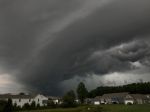By Barry Abisch
Provided by WorldNow
Saturday night is your chance to recover that hour of sleep you lost back in March.
In most of the United States, Daylight Saving Time ends at 2 a.m. Sunday. As a practical matter, most people set their clocks back one hour before turning in for the night. Since 2007, DST has been in effect from the second Sunday in March to the first Sunday in November.
The idea for Daylight Saving Time may have originated with Benjamin Franklin, although it did not see widespread use until World War I. It’s a summer-time energy-saving measure, designed to shift an hour of daylight from the morning to the evening, when people are more active and more likely to be outdoors, said Bill Mosley of the U. S. Department of Transportation. The Transportation Department administers time-keeping regulations for the federal government.
Does it work? DST shortens the time between sunset and bedtime, meaning people burn electric lights a fewer minutes each day. Bob Aldrich of the California Energy Commission says the result is a 1 percent reduction in daily electricity use during the months when Daylight Saving Time is in effect.
During the shorter days of autumn and winter, however, Daylight Saving Time would merely move an hour of darkness from evening to morning, offsetting any reduction in energy use. That also could create hazardous conditions, particularly for youngsters walking to school of waiting for the school bus. Hence, the annual return to standard time for the four darkest months of the year.
Read More Here: http://www.19actionnews.com/Global/story.asp?S=13444158
Article Courtesy of WOIO 19 Action News
















